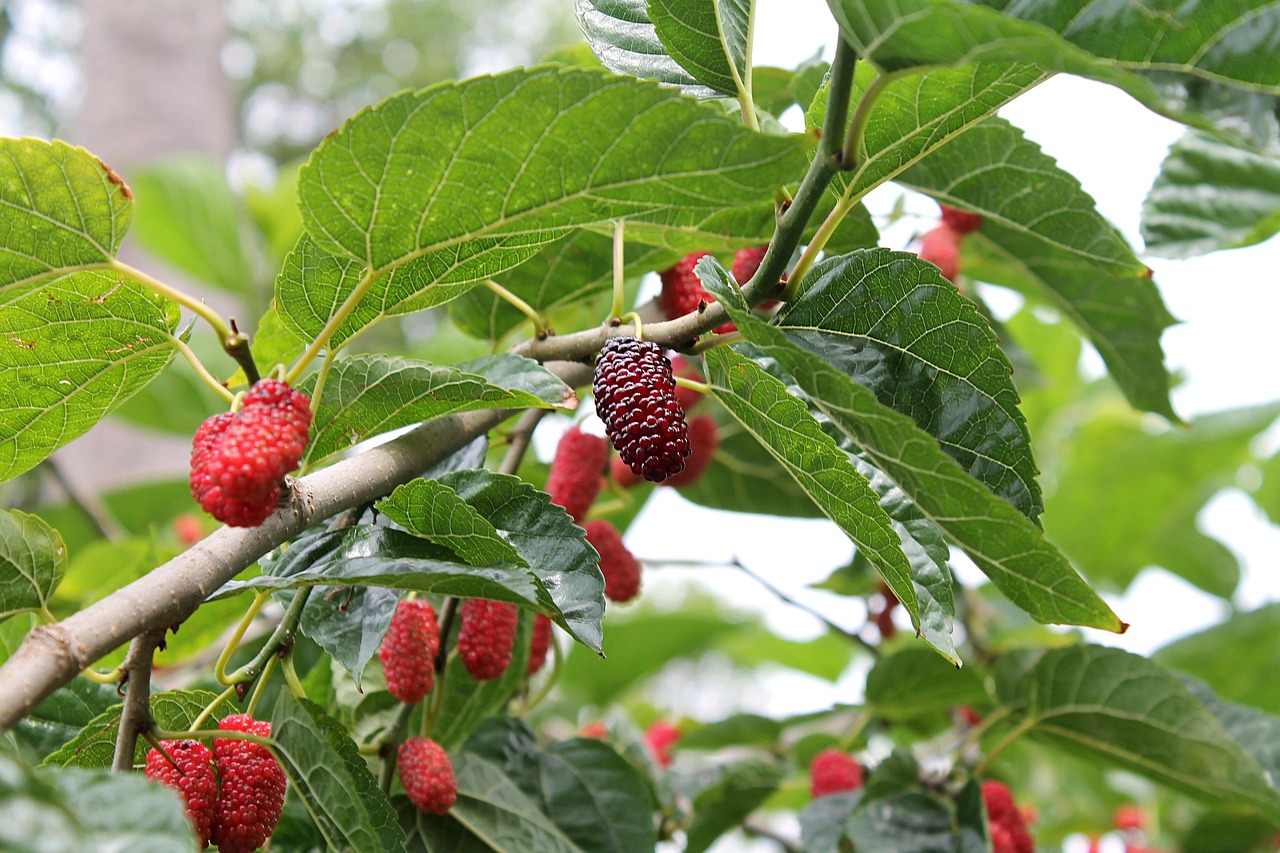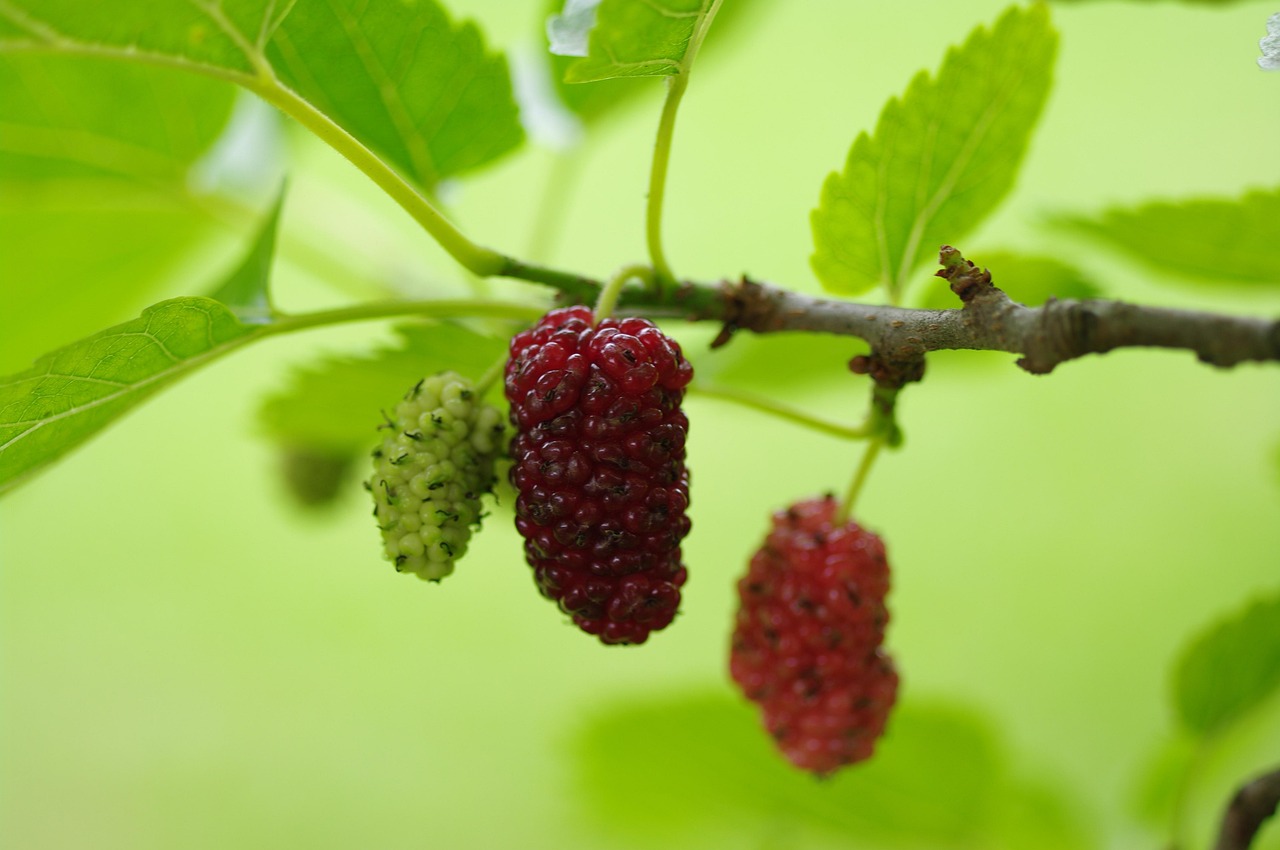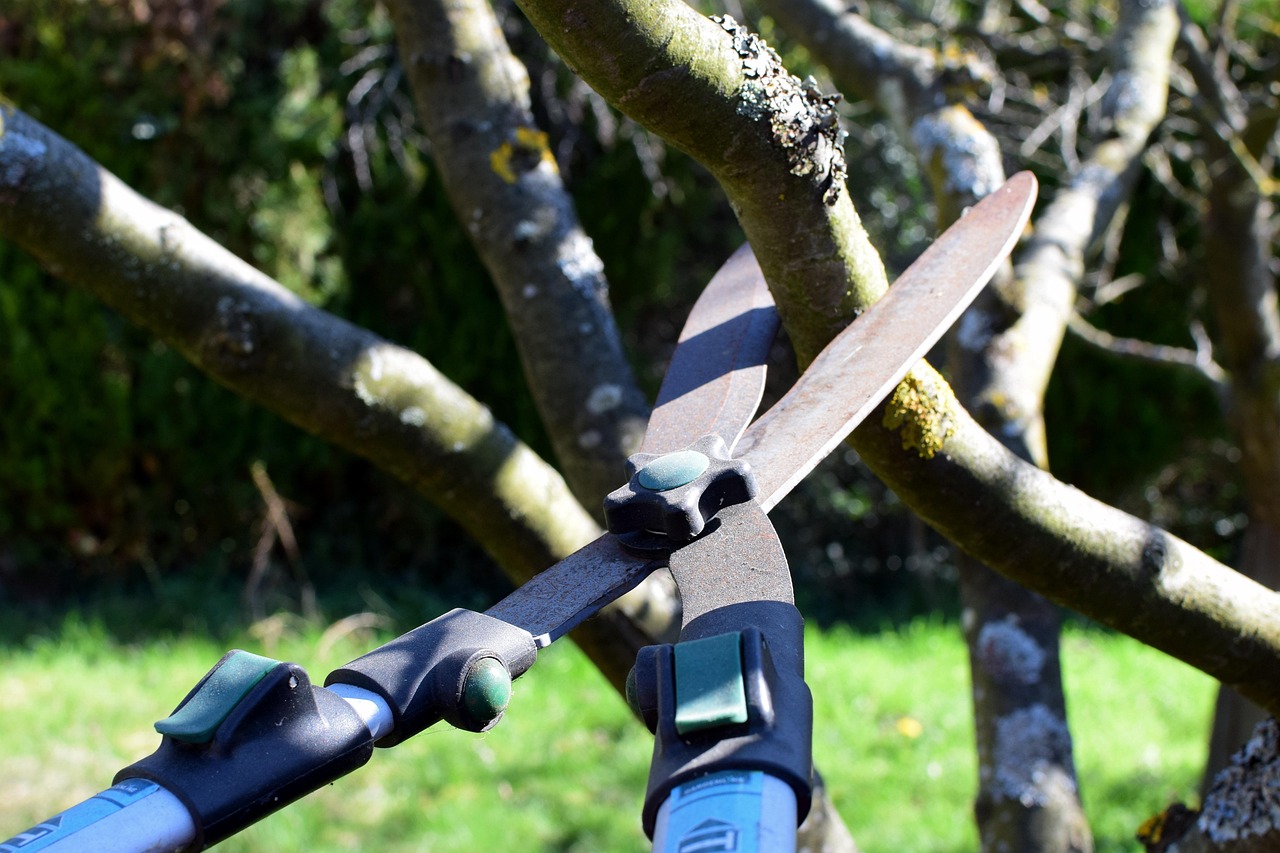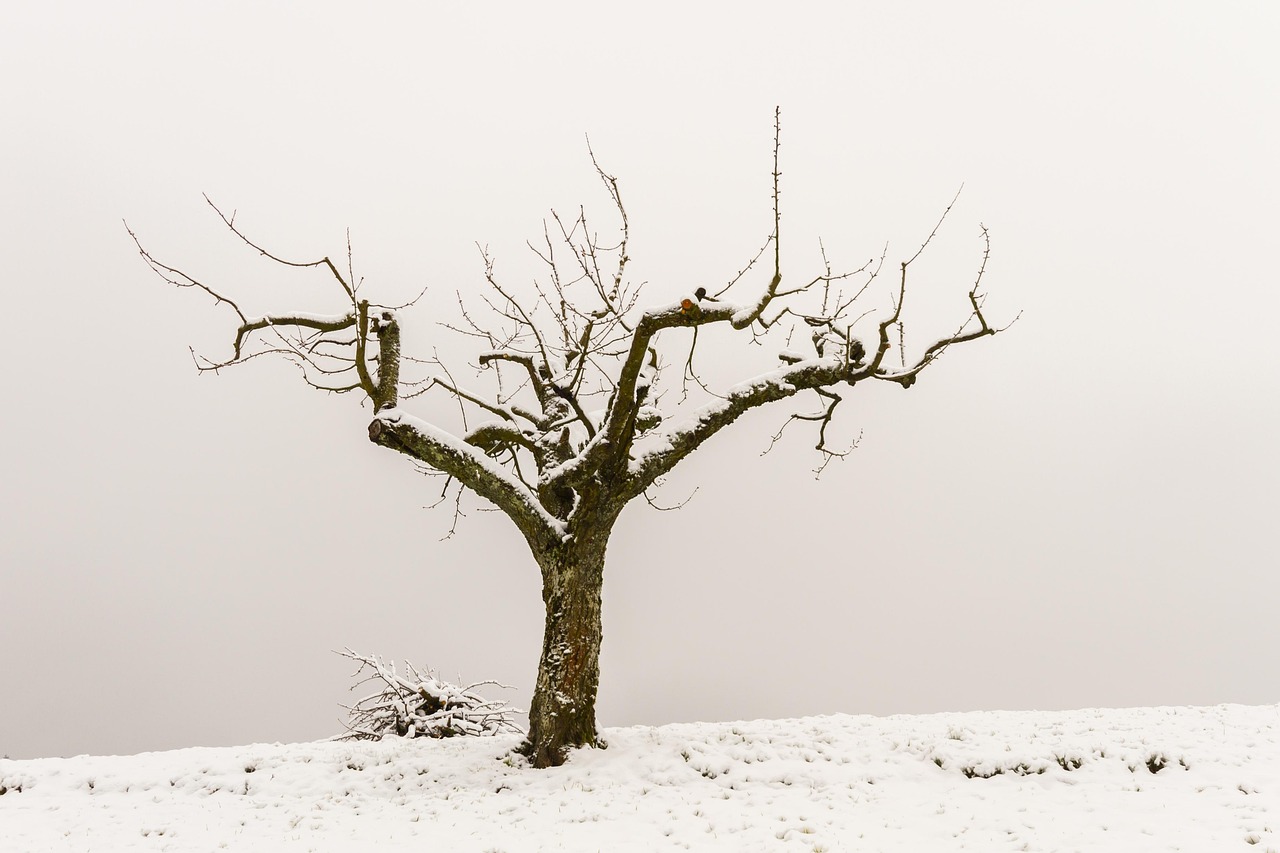To achieve maximum harvest from your mulberry tree, proper pruning is essential. Pruning should be done during the tree’s dormant season, typically in late winter or early spring. Focus on removing dead, damaged, or overcrowded branches while shaping the tree to ensure sunlight penetration and air circulation.
Understanding Mulberry Trees
Mulberry trees are known for their fast growth and delicious berries. They belong to the Moraceae family and are native to various parts of the world, including Asia, Europe, and North America. These trees can thrive in a variety of soil types and are relatively low-maintenance, making them a popular choice for home gardens.

There are several species of mulberry trees, with the most common being the red mulberry (Morus rubra) and the white mulberry (Morus alba). Each species has unique characteristics, including fruit color, size, and growth habit. Understanding these differences can help you select the right variety for your garden and maximize your harvest.
The Importance of Pruning
Pruning is crucial for the health and productivity of mulberry trees. It serves various purposes:
- Encourages Growth: Pruning stimulates new growth by removing old or non-productive branches.
- Increases Sunlight Exposure: Properly pruned trees allow better light penetration, which enhances fruit production.
- Improves Air Circulation: Adequate airflow reduces the risk of fungal diseases.
- Shapes the Tree: Pruning helps maintain a desired shape, making it easier to manage and harvest.
When to Prune Mulberry Trees
The best time to prune mulberry trees is during their dormant period, usually in late winter or early spring before new growth begins. This timing helps minimize stress on the tree and allows for quicker recovery. Pruning during dormancy also reduces the risk of sap bleeding, which can occur if cuts are made during active growth.

However, light pruning can be done throughout the growing season to remove any dead or damaged branches. This practice helps keep the tree healthy without causing excessive stress.
Essential Pruning Techniques
There are several pruning techniques that can be used to effectively manage mulberry trees:
- Thinning: This involves removing entire branches back to their point of origin. Thinning improves light penetration and airflow within the tree canopy.
- Heading Back: This technique shortens long branches by cutting them back to a bud or lateral branch. It encourages bushier growth and can help control height.
- Crown Reduction: This method reduces the overall size of the tree by selectively removing branches from the upper crown. This is especially useful for tall trees that may be difficult to harvest.
Tools Needed for Pruning
Having the right tools is essential for effective pruning. Here are some tools you should consider:

| Tool | Description |
|---|---|
| Hand Pruners | Ideal for small branches and precise cuts. |
| Loppers | Used for cutting larger branches; provides more leverage. |
| Saw | A pruning saw is helpful for thick branches that cannot be cut with pruners or loppers. |
| Gloves | Protect your hands while handling tools and branches. |
Steps to Prune a Mulberry Tree
Follow these steps when pruning a mulberry tree:
- Start by assessing the tree’s structure. Look for dead, damaged, or crossing branches.
- Remove any dead or diseased wood first. Cut at the base of the branch to prevent regrowth.
- Thin out crowded areas to improve airflow. Focus on removing branches that are growing toward the center of the tree.
- Shape the tree by cutting back long branches to encourage bushy growth.
- Finish by cleaning up any debris around the base of the tree to reduce pest attraction.
Regular pruning not only enhances fruit production but also promotes a healthier tree. By following these guidelines, you can ensure that your mulberry tree remains productive for years to come.
Common Mistakes in Pruning Mulberry Trees
Pruning can greatly enhance the health and yield of mulberry trees, but it is easy to make mistakes. Avoiding common pitfalls is essential for successful pruning. Here are some frequent mistakes to watch out for:

- Pruning at the Wrong Time: Pruning too early or too late can result in reduced fruiting. Always stick to the recommended dormant season.
- Over-Pruning: Removing too many branches can stress the tree and reduce fruit production. Aim for a balanced approach.
- Ignoring Tree Shape: Failing to consider the natural form of the tree may lead to an unbalanced structure that affects growth.
- Using Dull Tools: Dull tools can damage branches. Always ensure your tools are sharp for clean cuts.
- Neglecting Safety: Not wearing gloves or protective eyewear can lead to injuries. Always prioritize safety during pruning.
Pruning for Different Ages of Mulberry Trees
The approach to pruning may vary depending on the age of the tree. Understanding how to prune at different stages can help you achieve optimal growth.
Younger Trees (1-3 Years Old)
For young mulberry trees, the focus should be on establishing a strong framework. Follow these guidelines:
- Remove any competing leaders to promote a single central leader.
- Thin out lateral branches, leaving those that are strong and well-placed.
- Encourage a balanced shape by cutting back excessively long branches.
Mature Trees (4-10 Years Old)
Mature mulberry trees require maintenance pruning to sustain their health and productivity. Consider these steps:
- Focus on removing any dead or diseased wood from previous seasons.
- Thin out crowded areas to improve airflow and light penetration.
- Maintain the desired shape by regularly cutting back long or vertical branches.
Old Trees (10+ Years Old)
Older trees may require more extensive care. The goal is to rejuvenate the tree while promoting fruiting:
- Conduct a thorough assessment of the tree’s health and structure.
- Remove weak or dead branches, but be careful not to over-prune.
- Consider drastic pruning by cutting back large limbs to encourage new growth if the tree is becoming unproductive.
Post-Pruning Care
After pruning, it is vital to care for your mulberry tree to ensure a healthy recovery and optimal fruit production. Here are some recommended practices:
Watering
Proper watering after pruning is crucial. Ensure your tree receives adequate moisture, especially if it is in a dry spell. Deep watering encourages root growth and helps the tree recover from pruning stress.
Fertilizing
A balanced fertilizer can support recovery after pruning. Apply a slow-release fertilizer in early spring to provide nutrients that promote new growth. Be cautious with the amount; too much fertilizer can harm the tree.
Pest and Disease Monitoring
After pruning, keep an eye on your tree for signs of pests or diseases. Regular inspections can help you catch any issues early:
- Aphids: Look for clusters on new growth; treat with insecticidal soap if necessary.
- Fungal Infections: Ensure good airflow and remove any affected areas promptly.
Pruning Mulberry Trees for Specific Purposes
You may have specific goals when pruning your mulberry trees. Here are some techniques tailored for various objectives:
Maximizing Fruit Production
If your main goal is to increase fruit yield, focus on these strategies:
- Thin branches to allow sunlight to reach all areas of the canopy.
- Remove suckers that drain energy from fruit-bearing limbs.
Aesthetic Shaping
If you want your mulberry tree to add beauty to your landscape, consider these approaches:
- Create a pleasing shape by selectively pruning branches to maintain symmetry.
- Encourage a lower growth habit if space is limited, allowing easier access to fruits.
Controlling Size and Height
If your tree has outgrown its space, you may need to control its size:
- Regularly cut back vertical growth each season to keep the tree manageable.
- Selectively prune upper branches while maintaining lower branches for balance.
By understanding these various aspects of pruning mulberry trees, you can tailor your approach based on specific needs and conditions. This will lead to healthier trees and more bountiful harvests in the future.
Tools and Techniques for Effective Pruning
Using the right tools is vital for successful pruning. Proper equipment ensures clean cuts, which are essential for the health of your mulberry trees. Here is a detailed look at some essential tools and techniques for effective pruning.
Essential Pruning Tools
Investing in quality tools can make the pruning process easier and more efficient. Below is a list of essential pruning tools:
| Tool | Purpose |
|---|---|
| Hand Pruners | Ideal for small branches and precise cuts. |
| Loppers | Used for cutting medium-sized branches; provides additional leverage. |
| Pruning Saw | Helps with thick branches that cannot be cut with pruners or loppers. |
| Pole Pruner | Allows you to reach high branches without using a ladder. |
| Gloves | Protects your hands while handling tools and branches. |
Pruning Techniques
Understanding various pruning techniques can help you achieve your desired tree shape and health. Here are some techniques to consider:
Angle Cuts
When making cuts, always use an angle cut rather than a straight cut. This technique allows water to drain away from the cut, reducing the risk of rot and disease.
Proper Cut Location
Make your cuts just above a bud or lateral branch. This encourages new growth in the desired direction and helps maintain the tree’s natural shape.
Cleansing Cuts
If you are removing a larger limb, make three cuts:
- The first cut should be made on the underside of the branch, about a foot from the trunk. This prevents the bark from tearing.
- The second cut should be made further out, cutting downwards to remove most of the weight of the limb.
- The final cut should be made at the trunk, just outside the branch collar for a clean finish.
Seasonal Considerations for Pruning Mulberry Trees
Understanding the seasons and their impact on pruning can enhance your results. Here is how different seasons affect pruning efforts.
Spring Pruning
Spring is an ideal time for light pruning. As buds begin to swell, you can remove any dead or damaged wood. Spring pruning encourages new growth as the tree awakens from dormancy.
Summer Pruning
Summer is typically not recommended for heavy pruning due to the tree’s active growth. However, light maintenance can be performed:
- Remove suckers and water sprouts that may drain energy from fruit-bearing branches.
- Thin out crowded areas to improve airflow and sunlight exposure.
Fall Pruning
Fall is generally not recommended for pruning, as it can stimulate new growth that may not survive the winter. However, if you notice any diseased or damaged wood, it is advisable to remove it promptly to prevent further issues.
Winter Pruning
Winter is the best time for major pruning when mulberry trees are dormant. This period allows you to see the tree’s structure clearly without leaves obstructing your view. Follow these guidelines:
- Avoid pruning during extreme cold spells.
- Focus on shaping the tree, removing dead or diseased wood, and ensuring adequate airflow among branches.
Pest Management Post-Pruning
Pest management is critical after pruning, as open cuts can attract pests or diseases. Here are some steps to take:
Inspect Regularly
After pruning, keep an eye on your tree for any signs of pests or diseases. Regular inspections will help catch issues before they become severe:
- Spider Mites: Look for fine webs on leaves; use insecticidal soap if needed.
- Scale Insects: Check for hard bumps on branches; treat with horticultural oil.
Seal Cuts if Necessary
If you made large cuts, consider applying a wound sealant to protect from pests and diseases. However, many experts recommend letting nature take its course with smaller cuts, as trees can heal themselves effectively.
Encourage Beneficial Insects
Pest control can also include attracting beneficial insects such as ladybugs and lacewings. Planting companion plants like marigolds or dill nearby can help draw these useful predators to your garden.
Mulberry Tree Varieties and Their Pruning Needs
Different varieties of mulberry trees may have specific pruning needs based on their growth habits and fruiting patterns. Understanding these differences can aid in effective management:
Red Mulberry (Morus rubra)
This native species typically grows tall and may require more significant shaping to maintain size and promote fruiting:
- Aim for a central leader to maintain height.
- Thinning cuts help manage density for better sunlight exposure.
White Mulberry (Morus alba)
The white mulberry is often bushier and may need less aggressive pruning:
- Focus on removing dead or damaged wood rather than shaping the tree extensively.
- This variety may benefit from light summer maintenance to control growth.
Black Mulberry (Morus nigra)
This variety is prized for its flavor but may require careful management:
- Regularly thin branches to improve air circulation and reduce disease risk.
- Avoid heavy pruning during active growth periods to prevent stress.
By understanding the different needs of various mulberry tree species, you can better tailor your pruning practices for optimal health and fruit production.
Additional Considerations for Successful Mulberry Tree Pruning
Beyond the basic techniques and timing of pruning, there are several additional considerations that can enhance your mulberry tree’s health and productivity. Understanding these factors can lead to greater success in your gardening efforts.
Soil Health and Nutrition
The health of your mulberry tree is closely tied to the quality of the soil in which it grows. Ensuring that your soil is nutrient-rich and well-draining will promote better growth and fruit production. Here are some tips to maintain soil health:
- Soil Testing: Conduct a soil test to determine pH levels and nutrient content. This information can guide your fertilization practices.
- Organic Matter: Incorporate organic matter, such as compost or well-rotted manure, to enrich the soil and improve its structure.
- Mulching: Apply a layer of mulch around the base of the tree to retain moisture, suppress weeds, and gradually add nutrients to the soil as it decomposes.
Pest and Disease Prevention
Preventing pests and diseases is critical to maintaining healthy mulberry trees. In addition to post-pruning management, consider the following preventative measures:
- Companion Planting: Planting companion plants that repel pests can help protect your mulberry tree. For example, marigolds can deter nematodes and aphids.
- Regular Inspections: Conduct routine checks for any signs of disease or pest infestations, addressing these issues promptly.
- Proper Watering: Avoid overwatering or underwatering, as both can lead to stress that attracts pests or diseases.
Harvesting Techniques
Once your mulberry tree is pruned and healthy, you can look forward to a fruitful harvest. Knowing when and how to harvest can make a significant difference in fruit quality:
- Timing: Harvest mulberries when they are fully ripe, usually indicated by a deep color and slight softness.
- Gentle Handling: Handle the fruit gently to avoid bruising. Use scissors or pruning shears to cut clusters rather than pulling them off by hand.
- Regular Picking: Regularly check for ripe fruit and pick them to encourage further production.
Final Thoughts
Pruning mulberry trees is an essential practice that can significantly impact their health and productivity. By understanding the specific needs of your tree species, employing effective pruning techniques, and ensuring good soil health, you can maximize your harvest. The right tools and timely interventions will help you manage your trees effectively throughout their life cycle.
Your efforts in pruning will not only enhance the aesthetic appeal of your garden but will also lead to bountiful fruit production. Remember that each tree is unique, and adapting your practices based on specific conditions will yield the best results. With patience, care, and diligence, your mulberry trees can thrive and provide delicious fruits for years to come.
As you embark on your journey of mulberry tree cultivation, keep these guidelines in mind. Embrace the joy of gardening and enjoy the fruits of your labor!
